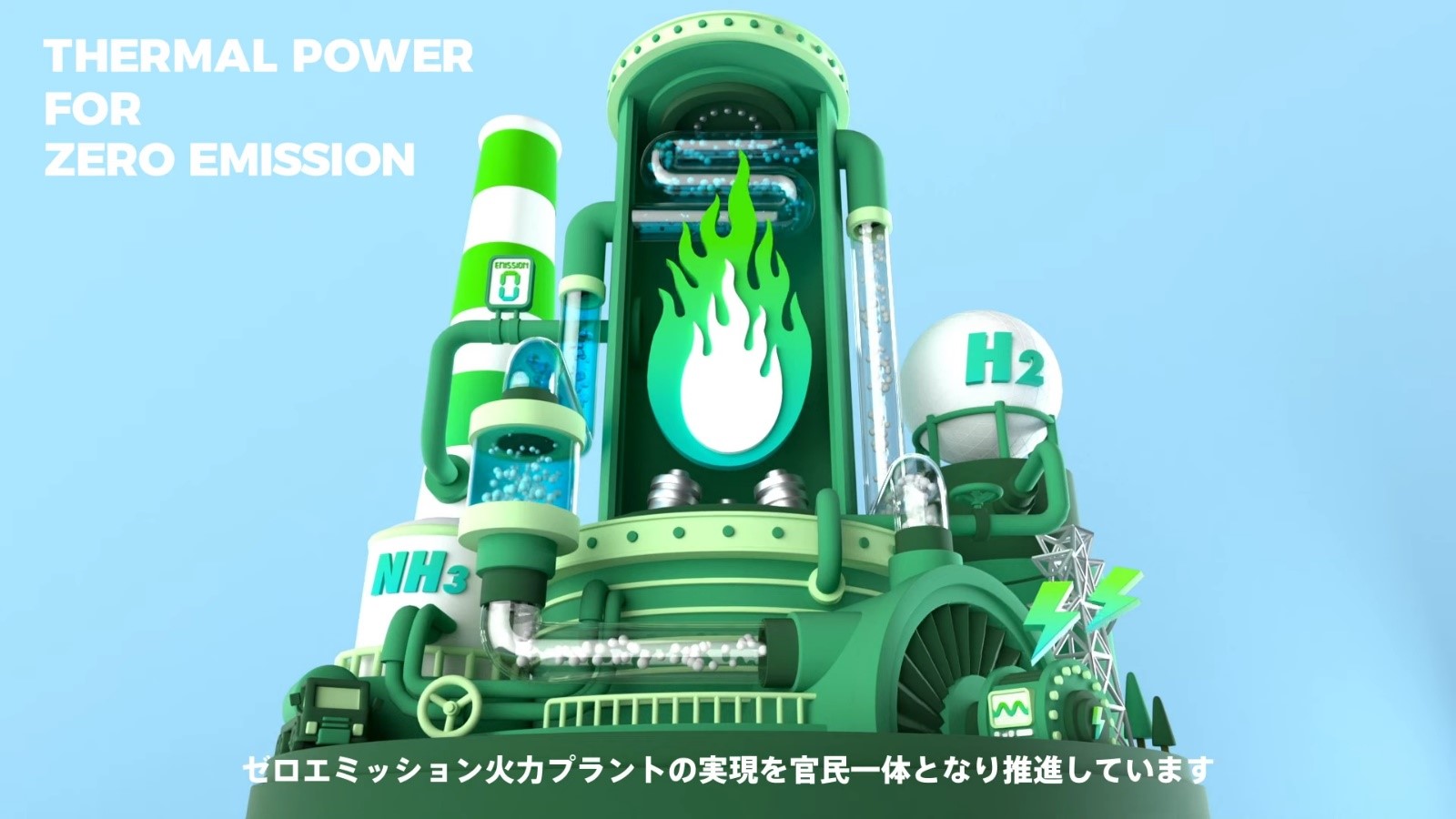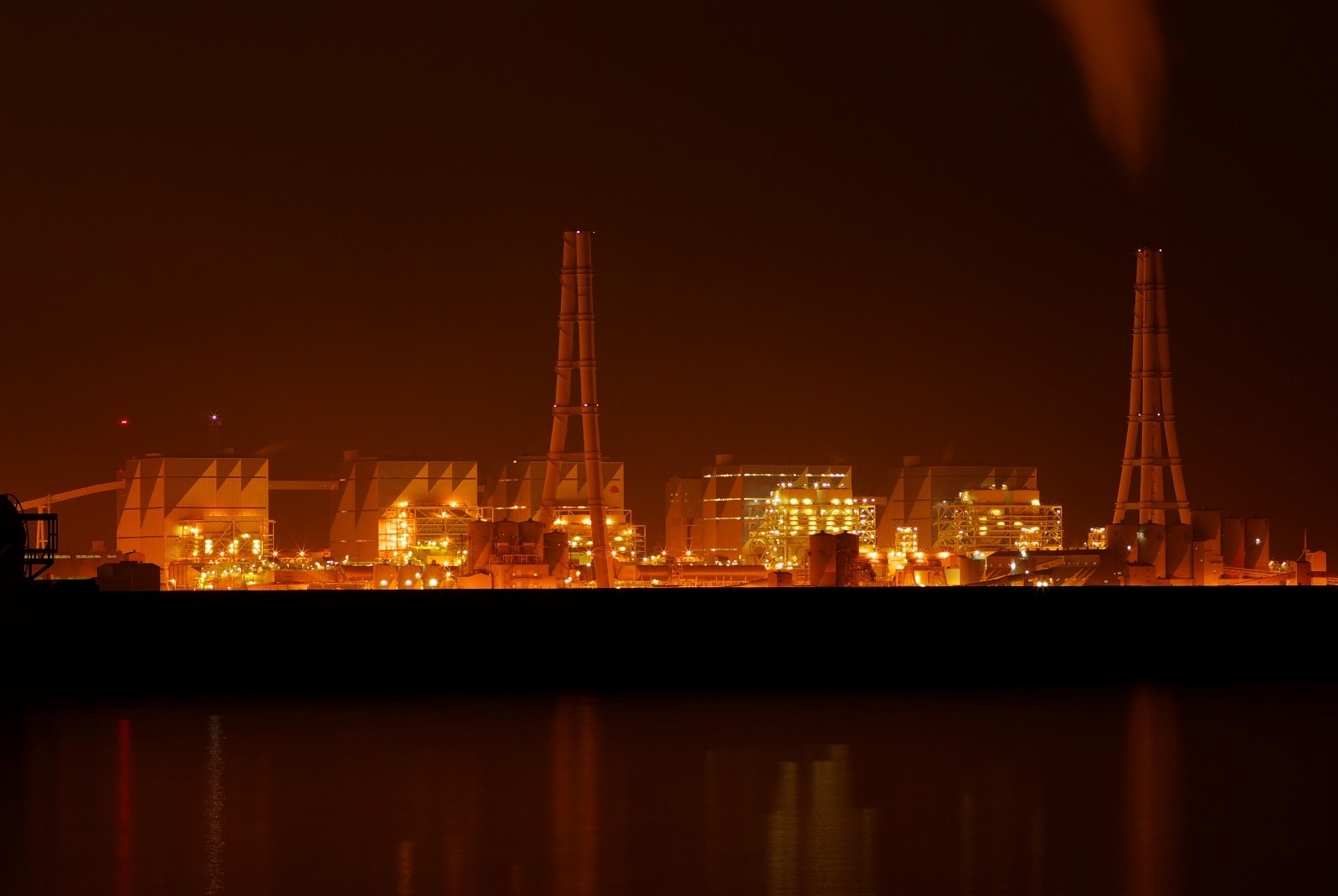It has become a consensus for the world to reduce dependence on fossil fuels and cut carbon emissions as renewables become mainstream in recent years. Japan, which has been actively developing hydrogen, is turning its focus to ammonia as a critical fuel.

A carbon-free thermal power plant video clip showcased by Japan’s Ministry of Economy, Trade and Industry in the U.S. (Photo: metichannel YouTube)
What is ammonia energy?
Ammonia generates electricity by using the thermal and energy produced by burning ammonia to drive turbine.
The way ammonia generates energy is similar to that of traditional fossil fuels such as coal and natural gas, with the raw materials used as the main difference. As the chemical composition of ammonia does not contain carbon, burning ammonia does not produce carbon monoxide or carbon dioxide, meaning that ammonia power generation has the potential to address the carbon emission issues associated with coal and natural gas power plants.
But why did we hear so little about ammonia energy in the past if it’s carbon free?
In fact, the immaturity of ammonia technology is the major barrier now. It has yet to achieve 100% pure ammonia combustion, but only co-firing with coal or natural gas. Moreover, while ammonia combustion does not produce carbon dioxide, it generates nitrogen oxides, which is harmful to human health and the environment.
What are the advantages of ammonia as a strategic energy source?
Why does Japan, a nation highly relies on energy imports like Taiwan, starts developing ammonia energy?
Japan first identified ammonia as a fuel to address climate change and achieve net zero in the New International Resources Strategy formulated in 2020. Then it adds ammonia to the nation’s energy mix in the 6th Strategic Energy Plan published the following year. However, Japan doesn’t just consider ammonia as a fuel for energy generation only, but a strategic energy source to compensate hydrogen.
Apart from carbon free, there are several reasons for Japan to develop ammonia. Compared to hydrogen, ammonia has better stability that helps avoid risks like explosions during transportation. Moreover, technologies for the preparation, storage, and transportation of ammonia are already mature, requiring no significant initial capex on developing the supply chain. It is also worth noting that electricity generated by ammonia is cheaper than that by hydrogen, according to preliminary calculation [1].
Furthermore, as ammonia can produce hydrogen through chemical reactions, developing an ammonia supply chain would also expand the source of hydrogen simultaneously. The ammonia transported to Japan can be further converted into hydrogen for power generation or as a reserve for fuel cells.

JERA Hekinan Power Station is the first plant in Japan selected for experimenting large-scale co-firing ammonia with coal. (Photo: Wikipedia)
Challenges ahead of commercializing ammonia energy generation
Japan made significant breakthroughs in ammonia technology after the nation accelerated its research under the Strategic Innovation Promotion Program (SIP) pushed forward by the cabinet during 2014 and 2018. However, there’s still a long way for ammonia energy generation to achieve commercial operation.
In 2014, Japan’s research team achieved a global milestone by successfully generating electricity using 30% ammonia and 70% coal. In 2018, Japan again successfully generated electricity using a mixture of 80% methane and 20% ammonia. These achievements have boosted Japan’s confidence in the commercial viability of ammonia energy generation.
If Japan can convert the existing coal or natural gas power plants into co-combustion plants mixing with ammonia, and then gradually increases the ratio of ammonia in the fuel in the future, it can replace fossil fuels eventually.
However, there are still numerous challenges due to the nature of ammonia. The traditional industrial method of producing ammonia involves the Haber process, which combines hydrogen and nitrogen to produce ammonia. Yet, hydrogen, the key material, is primarily produced by using fossil fuels [2].
To achieve zero-carbon emissions in the ammonia production process, R&D on related technologies must be accelerated to enable the commercialization of other carbon-free hydrogen production methods or utilizing carbon capture and storage (CCS) technologies to store or recycle greenhouse gases, thereby reducing the environmental impact of carbon dioxide.
Regarding nitrogen oxides produced during ammonia power generation, experiments have confirmed that using existing technologies [3] can control the concentration of nitrogen oxides emitted to below 10 ppm, which complies with environmental standards. Furthermore, experiments have also demonstrated that the nitrogen oxide emissions from co-firing with 20% ammonia are nearly equivalent to the nitrogen oxide emissions from burning coal alone.
To Japan, another advantage of ammonia is the potential for domestic production and energy security. In 2019, the nation’s ammonia consumption was 1.08 million tons, with 80% of it produced at home. However, ammonia is primary used for nitrogen fertilizer in Japan, meaning that it must increase ammonia production for energy generation, or it could impact the fertilizer market. Therefore, the issue of ammonia supply would be a challenge that needs to be addressed when advancing ammonia power generation to the commercial stage.
![]()
Japan explicitly said in the video that one of the purposes of developing ammonia technology is to export it in the future and assist Southeast Asian countries that reply on energy imports. (Photo: NEDO Channel YouTube)
Ammonia energy amid energy crisis
To accelerate the academic, industrial, and commercial development of ammonia power generation, the Ministry of Economy, Trade and Industry (METI) established the “Council for the Introduction of Ammonia Fuel” in October 2020, facilitating direct discussions between power generation companies and manufacturers, addressing issues related to the application and development of ammonia power generation and providing a comprehensive solution to research and supply chain challenges.
JERA, Japan's largest thermal power generation company, revealed in its 2020 net-zero emissions roadmap that it plans to start co-firing ammonia in its thermal power plants by 2030, aiming for 100% ammonia power generation by 2040. The company recently announced that it will initiate a co-firing experiment at its Hekinan Thermal Power Station using 80% coal and 20% ammonia this year. If successful, this experiment would represent a significant milestone for ammonia power generation.
In addition, METI plans to use ammonia as the energy source for the World Expo 2025 in Osaka to showcase the research achievements in 100% ammonia power generation.
Japan, which has long depended on fossil fuels import, is actively moving towards ammonia power generation, not just for its low-carbon characteristics but also for the potential of energy security and stable supply, especially in wake of the Russia-Ukraine war-led energy crisis. If Japan can establish a leading position in the field, it may also export related technologies in the future.
[1]The electricity price of 100% pure hydrogen combustion is JPY 97.3/kWh, while the that of 100% pure ammonia combustion is only JPY 23.5/kWh according to estimates by METI.
[2] Presently, there are two methods for industrial hydrogen production: “Methane + high-temperature steam → hydrogen + carbon monoxide” and “Carbon monoxide + high-temperature steam → hydrogen + carbon dioxide.” Both processes result in the emission of carbon-containing waste products.
[3] Currently, thermal power plants use ammonia as a catalyst to reduce nitrogen oxides generated during the power generation process into nitrogen gas and water.
This article was originally published on Delta Electronics Foundation. Read the original article.


